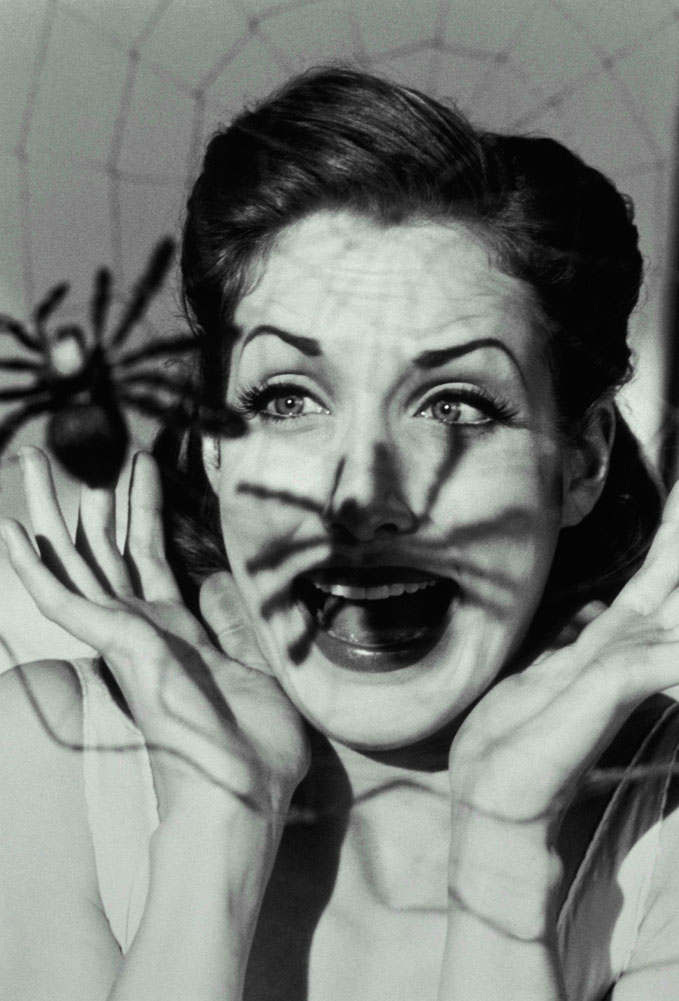Chapter 36. Systematic Desensitization
Learning Objectives

Describe the behavioral therapy called systematic desensitization.
Identify the sequence of steps in systematic desensitization therapy.
Review
Review
Select the NEXT button to continue with the Review.

1. Behavior therapies focus on the symptoms of a disorder, not on its possible underlying causes. According to the behavioral perspective, people with phobias have been conditioned to fear specific objects or situations.
Review
Review
Select the NEXT button to continue with the Review.
2. According to the behavioral perspective, phobias should be treated with counterconditioning—helping people replace the fear response with a more neutral (no fear) response.
Review
Review
Select the NEXT button to continue with the Review.

3. One form of counterconditioning is exposure therapy, in which people are repeatedly exposed to the things that they fear, in a controlled environment that ensures that nothing bad will actually happen. This allows them to habituate to those feared stimuli.
Review
Review
Select the NEXT button to continue with the Review.

4. One problem with exposure therapy is that people who have a phobia about something will avoid that specific object or situation, because it produces anxiety. As a result, they never habituate to the feared stimulus.
Review
Review
Select the NEXT button to continue with the Review.

5. The solution is systematic desensitization, a form of exposure therapy based on gradual, incremental exposure to the feared object or event. The therapist begins by constructing an anxiety hierarchy ranging from a very weak stimulus to the original strongly feared stimulus.
Review
Review
Select the NEXT button to continue with the Review.

6. The therapist then leads the person, step by step, through the gradually increasing level of exposure to the feared stimulus, helping the person stay relaxed at each stage.
Practice: A Simplified Anxiety Hierarchy
Practice: A Simplified Anxiety Hierarchy
Use the “Continue” button to move through the sequence of events.

Systematic desensitization is based on the idea that you cannot be relaxed and anxious at the same time. The therapist would first help the patient to relax, and then present a sequence of exposures to the feared stimulus. Each step increases the intensity of the stimulus a little, while giving the patient time to learn to relax in the presence of that stimulus.

First, the therapist presents a very weak version of the feared stimulus. Because this patient has a phobia about spiders, the therapist might place a picture of a spider on a wall. It shouldn't be difficult for the patient to stay relaxed while viewing the picture. After all, that spider can't possibly hurt her!

If the patient can relax while viewing a picture of a spider at a distance, the therapist would next have her view the picture close up. If she became extremely anxious, the therapist would remove the picture. After helping the patient relax again, the therapist would reintroduce the picture gradually, until the patient could hold the picture in her hand without becoming anxious.

If the patient can relax while viewing a picture of a spider close up, the therapist might introduce a three-dimensional toy spider, gradually moving the spider closer to the patient. Once again, the therapist would remove the spider if the patient became anxious, but would keep exposing her to the toy spider until she could relax in its presence.

Now things get really interesting. People with phobias about spiders seem to be especially fearful about spiders touching their skin. An important step in the anxiety hierarchy would have the patient view the toy spider on the therapist's hand. Can you predict what the next step would be?

You may have guessed that, once the patient can remain relaxed while viewing the toy spider on the therapist's hand, it's time to place the toy spider on the patient's hand. If the patient can learn to view the toy spider resting on her own skin without becoming anxious, the therapist would move on to a real spider!

Introducing a real spider will probably produce a big jump in the patient's anxiety. To make the patient more comfortable, the therapist might place the spider in a glass container.

As the patient approaches the top of the anxiety hierarchy, the stimulus intensity gets higher and higher. Watching a live spider crawl on another person's skin could trigger a lot of anxiety. But, by this time, the patient has become well-practiced in relaxation techniques, so she can view the spider without feeling fearful.

Now, at last, the therapist places the live spider on the patient's hand. At any earlier point, this would have produced unbearable anxiety. But because the therapist has guided the patient slowly and carefully through the anxiety hierarchy, the patient can now stay calm in the presence of the feared stimulus.
Quiz 1
Quiz 1
Match the terms to their descriptions by dragging each the colored circle to the appropriate gray circle. When all the circles have been placed, select the CHECK ANSWER button.
Quiz 2
Quiz 2
Drag each image to one of the gray areas to create an anxiety hierarchy for treating a phobia about spiders. When all the images have been placed, select the CHECK ANSWER BUTTON.

View drawing of a spider at a distance

Hold drawing of a spider

View toy spider on a string

View live spider in glass container

View live spider on therapist’s hand

Allow live spider to crawl on own hand
Conclusion
